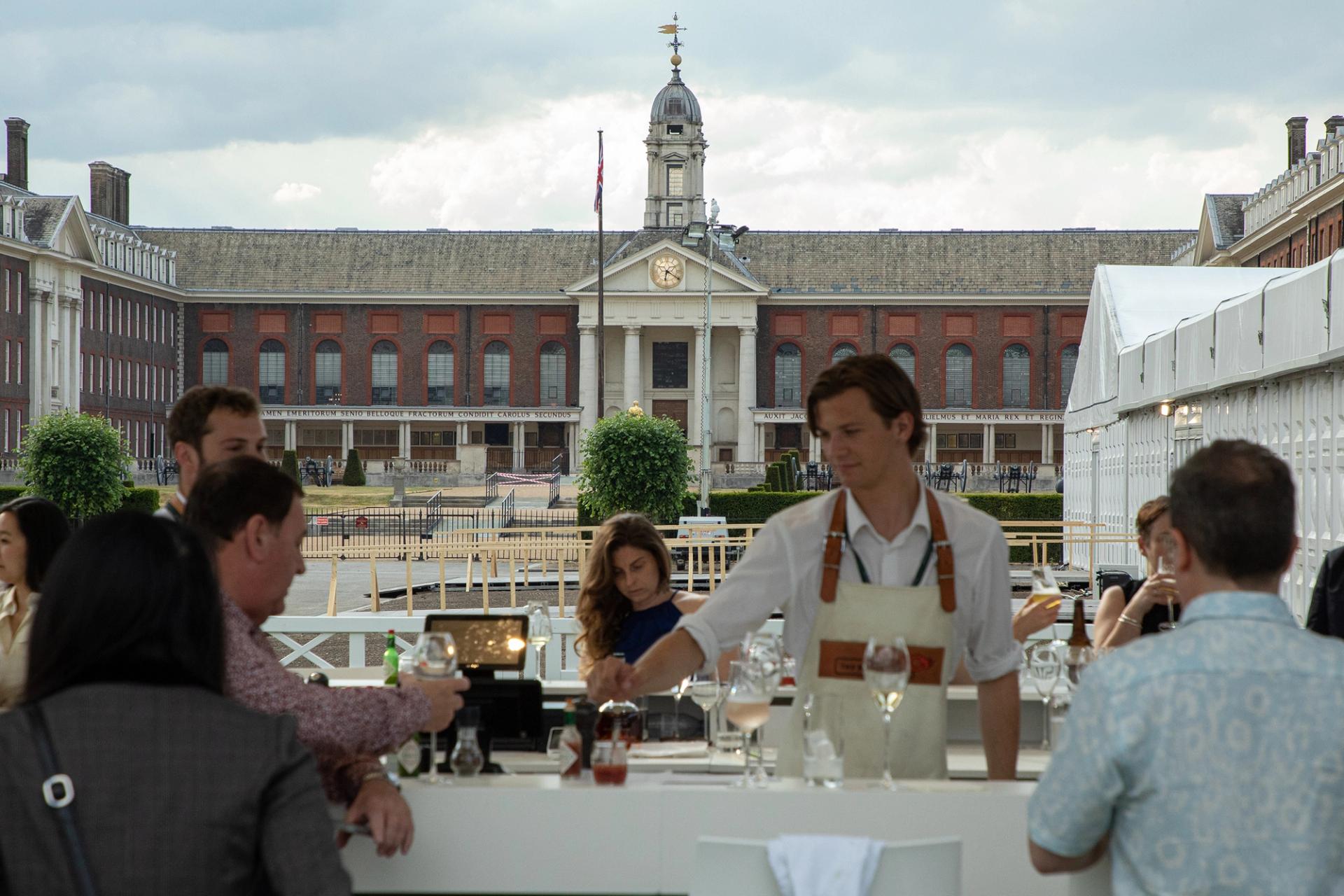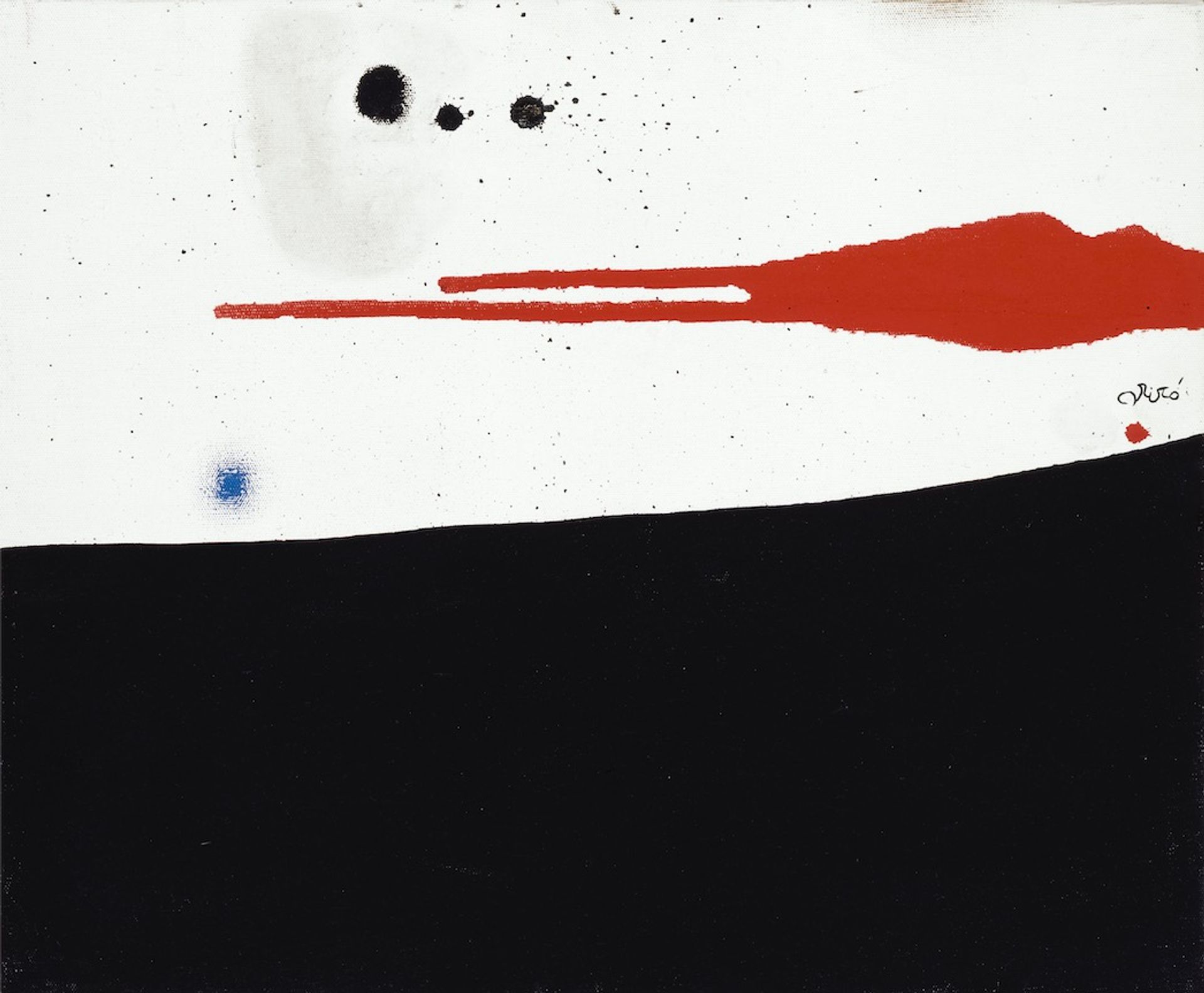The inaugural edition of Treasure House Fair opened to the public yesterday (until June 26), the same day the Bank of England announced it was considering raising interest rates to their all time high in 15 years.
Given this economic climate, it seems fitting that this new fair offers a curated and digestible experience, at least compared to its opulent predecessor Masterpiece. The interdisciplinary luxury fair organized by Art Basel owners MCH Group, which dominated the June calendar in London at the same venue, the Royal Chelsea Hospital, was canceled earlier this year.
Founded by Thomas Woodham Smith and Harry Van der Hoorn, Treasure House features 56 exhibitors, about half of its predecessor. Not only are feet happier with the smaller floor plan, but the vibe in the custom-built structure was vibrant and the focus was clearly on hospitality (the outdoor bar could remedy even the worst of fairs).

The fair’s outdoor bar on the grounds of the Royal Hospital Chelsea
Courtesy of Treasure House Fair
“Despite countless physical and spiritual differences, we carry the same DNA as Masterpiece and are focused on excellence and careful selection,” says Thomas Woodham Smith, adding that as “the complexities of Brexit become better known , the ‘workarounds’ [and] we are pursuing several initiatives with shippers and HMRC to help and support dealers around the world to come and exhibit with us.”
The quality of the works on offer is strong, with British modern art, antiques design and jewelery contributing to a truly multidisciplinary experience. There may be fewer stars than former fairs in the capital, but some items are priced in the eight figures, such as an £11m Joan Miro painting, Countryside (1974), at the US and Zurich-based Galerie Gmurzynska, or even a speedboat, for anyone who feels like splurging.

by Joan Miro Countryside (1974)
At the preview, Hong Kong-based gallery 3812 sold several works, including a work by Chinese artist Qian Wu for £15,000, and demonstrated that while the participating dealers were significantly less international , only 20% of exhibitors this year come from outside the country. UK – dealers further afield were making an impression.
London’s established names had clearly made an effort and were keen to make the fair work. Jonathan Green of Richard Green confirmed that “the first few days have brought in a number of excellent visitors and all aspects appear to be handled very well”. Their stand included works by LSLowry, Barbara Hepworth and Patrick Heron, priced up to £1million, which were attracting “good interest”.
Joost van den Bergh, of the eponymous gallery who had never exhibited at Masterpiece, reported a “very busy day with strong sales”, including the terracotta brick sculpture safety rope by Lahore-based artist, Noor Ali Chagani, which sold in the region of £20,000.
Osborne Samuel sold two works by Lynn Chadwick, between £50,000 and £100,000, and a painting by Keith Vaughan for £200,000, at the end of the first day. Peter Osborne said: “Our modern UK presentation has been well received and visitor numbers are in line with Masterpiece.”
Some felt that attendance may have been lower than at previous summer fairs in London, but were optimistic that the right customers and collectors would come. “The first few days have been busy, but they could get even busier, and we hope the fair will become a staple of the London season and go from strength to strength,” says Simon Phillips, director of Ronald Phillips Antiques.
Optimism could be found even among dealers who had yet to sell. Eddie Keshishian, of the eponymous London-based gallery, had stopped exhibiting at Masterpiece in recent years, but is “excited about the focus of this fair and the quality of the dealers”, he says. While the gallery placed no work on the first day, it was signaling interest from London and US-based collectors and exhibiting a tapestry by British weaver Peter Collingwood, for £30,000.
Visitors leaving the site were greeted by a large-scale and dynamic ‘See you next year’ sign, a display as clear as the fair’s organizers are keen to convey confidence in its future. A confidence that the dealers, so far, seem to share.
